| [1] Ogawa T,Nishimura I.Different bone integration profiles of turned and acid-etched implants associated with modulated expression of extracellular matrix genes.Int J Oral Maxillofac Implants.2003; 18(2):200-210. [2] Weinlaender M,Kenney EB,Lekovic V,et al.Histomorphometry of bone apposition around three types of endosseous dental implants.Int J Oral Maxillofac Implants.1992;7(4):491-496. [3] Att W,Hori N,Takeuchi M,et al.Time-dependent degradation of titanium osteoconductivity: an implication of biological aging of implant materials.Biomaterials.2009;30(29):5352-5363. [4] Taborelli M,Jobin M,Francois P,et al.Influence of surface treatments developed for oral implants on the physical and biological properties of titanium. (I) Surface characterization. Clin Oral Implants Res.1997;8(3):208-216. [5] Davies JE.Mechanisms of endosseous integration.Int J Prosthodont.1998;11(5):391-401. [6] Kasemo B,Lausmaa J.Biomaterial and implant surfaces: on the role of cleanliness, contamination, and preparation procedures.J Biomed Mater Res.1988;22(A2 Suppl):145-158. [7] Hench LL,Wilson J.Surface-active biomaterials.Science. 1984; 226(4675):630-636. [8] Kanjer A,Optasanu V,Lavisse L,et al.Influence of Mechanical Surface Treatment on High-Temperature Oxidation of Pure Titanium.Oxid Met.2017:1-13. [9] Cai HZ,Hui-Xia HE,Wang FX,et al.The plasma spraying technology on titanium bases surface treatment on the effects of the human periodontal ligament stem cell growth.Chin J Geriat Dent.2017. [10] 吴丽霞,张丽丽,王远勤,等.4种修复金属材料对炎性牙周组织炎症因子表达的影响[J].口腔疾病防治,2016, 24(8):449-453. [11] 卢海宾,万蕾,周磊,等.常规保存方法对纯钛喷砂酸蚀表面成骨细胞生物学特性的影响[J].广东牙病防治, 2015,23(8):397-400. [12] Hori N,Att W,Ueno T,et al.Age-dependent degradation of the protein adsorption capacity of titanium. J Dent Res.2009; 88(7):663-667. [13] Zubkov T,Stahl D,Thompson TL,et al.Ultraviolet light-induced hydrophilicity effect on TiO2(110)(1 x 1). Dominant role of the photooxidation of adsorbed hydrocarbons causing wetting by water droplets. J Phys Chem B.2005;109(32):15454-15462. [14] Han Y,Chen D,Sun J,et al.UV-enhanced bioactivity and cell response of micro-arc oxidized titania coatings.Acta Biomater. 2008;4(5):1518-1529. [15] 陈建治,张富强.钛表面氧化物膜的形成与活化[J].国外医学(口腔医学分册),2006,33(1):48-50. [16] 卢海宾,万蕾,张雪洋,等.纯钛表面在不同储存条件下理化性能及生物活性的变化[J].临床医学工程,2016, 23(6):713-715. [17] Zhang Y,Andrukhov O,Berner S,et al.Osteogenic properties of hydrophilic and hydrophobic titanium surfaces evaluated with osteoblast-like cells (MG63) in coculture with human umbilical vein endothelial cells(HUVEC).Dent Mater.2010; 26(11):1043-1051. [18] 韩石磊,谢伟丽.储存媒介对钛种植体生物活性的影响[J].口腔医学,2016,36(11):1051-1053. [19] 沈建伟.储存媒介与紫外线照射对多孔纯钛种植体表面的影响[D].浙江大学,2015. [20] 陈学林,肖月.贮存条件对喷砂酸蚀钛种植体表面成骨细胞活性的影响[J].口腔医学研究,2016, 32(2):168-171. [21] Haibin L,Lei W,Xueyang Z,et al.Effects of Hydrocarbons Contamination on Initial Responses of Osteoblast-like Cells on Acid-Etched Titanium Surface.Rare Metal Mat Eng.2013; 42(8):1558-1562. [22] Hori N,Ueno T,Minamikawa H,et al.Electrostatic control of protein adsorption on UV-photofunctionalized titanium.Acta Biomater.2010;6(10):4175-4180. [23] Hori N,Ueno T,Suzuki T,et al.Ultraviolet light treatment for the restoration of age-related degradation of titanium bioactivity.Int J Oral Maxillofac Implants.2010;25(1):49-62. [24] Ahn SJ,Han JS,Lim BS,et al.Comparison of ultraviolet light-induced photocatalytic bactericidal effect on modified titanium implant surfaces.Int J Oral Maxillofac Implants.2011;26(1):39-44. [25] Qin Z,Teng W.Effect of ultraviolet-photofunctionalization of titanium on protein adsorption and competition.Zhonghua Kou Qiang Yi Xue Za Zhi.2015;50(7):428-432. [26] 丁祥龙,周磊.TiO_2光催化效应对种植体生物活性的影响[J].口腔疾病防治,2016,24(1):49-52. [27] Wang R,Kazuhito H,Fujishima A.Light-induced amphiphilic surfaces.Nature.1997;388:431-432. [28] Zhang L,Li P,Gong Z,et al.Photocatalytic degradation of polycyclic aromatic hydrocarbons on soil surfaces using TiO(2) under UV light.J Hazard Mater.2008;158(2-3):478-484. [29] 韩石磊,赵颖,李大鹏,等.碱热处理联合紫外光照后钛体外活性的研究[J].口腔医学杂志,2017,37(5):408-412. [30] Hugenschmidt MB,Gamble L,Campbell CT.The interaction of H2O with a TiO2(110) surface.Surf Sci. 1994; 302(3):329-340. [31] 王积森,冯忠彬,孙金全,等.纳米TiO_2的光催化机理及其影响因素分析[J].微纳电子技术,2008,45(1):28-32. [32] Gao Y,Zhou L,Jiang Y,et al.Effect of different wave-length ultraviolet light-treated micro-arc oxidation titanium surfaces on the physicochemical properties and bioactivity in vitro.Zhonghua Kou Qiang Yi Xue Za Zhi.2012;47(6):359-363. [33] 黄超,邓磊,黄琼,等.二氧化钛光催化剂降解气相苯系物的研究进展[J].无机盐工业,2017,49(1):56-59. [34] 汤小胜,李汝杏,汤平,等.纳米二氧化钛光催化技术降解废水中苯酚的研究[J].湖北理工学院学报,2017,33(1):26-30. [35] 张智,张娟,李淑辉,等.二氧化钛光催化剂及其在环境中的应用研究进展[J].化学与粘合,2017, 39(2):135-139. [36] van Kooten TG,Schakenraad JM,van der Mei HC,et al.Influence of substratum wettability on the strength of adhesion of human fibroblasts.Biomaterials.1992;13(13):897-904. [37] 高岩,周磊,蒋颖,等.紫外光激发纯钛光催化作用对降解能力和体外矿化能力的影响[J].中国组织工程研究,2012,16(8):1382-1386. [38] 卢海宾.不同保存方法对纯钛表面理化性能以及生物活性的影响[D].南方医科大学博士论文,2013. [39] Billiau A,Edy VG,Heremans H,et al.Human interferon: mass production in a newly established cell line, MG-63.Antimicrob Agents Chemother.1977;12(1):11-15. [40] Takeuchi Y,Fukumoto S,Matsumoto T.Relationship between actions of transforming growth factor (TGF)-beta and cell surface expression of its receptors in clonal osteoblastic cells.J Cell Physiol.1995;162(3):315-321. [41] Zhang Y,Andrukhov O,Berner S,et al.Osteogenic properties of hydrophilic and hydrophobic titanium surfaces evaluated with osteoblast-like cells (MG63) in coculture with human umbilical vein endothelial cells(HUVEC).Dent Mater.2010; 26(11):1043-1051. [42] MacDonald DE,Rapuano BE,Deo N,et al.Thermal and chemical modification of titanium-aluminum-vanadium implant materials: effects on surface properties, glycoprotein adsorption, and MG63 cell attachment.Biomaterials. 2004; 25(16):3135-3146. [43] Martin JY,Schwartz Z,Hummert TW,et al.Effect of titanium surface roughness on proliferation, differentiation, and protein synthesis of human osteoblast-like cells(MG63).J Biomed Mater Res.1995;29(3):389-401. |
.jpg)
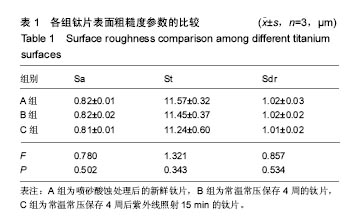
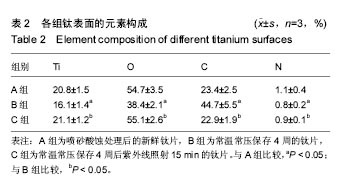
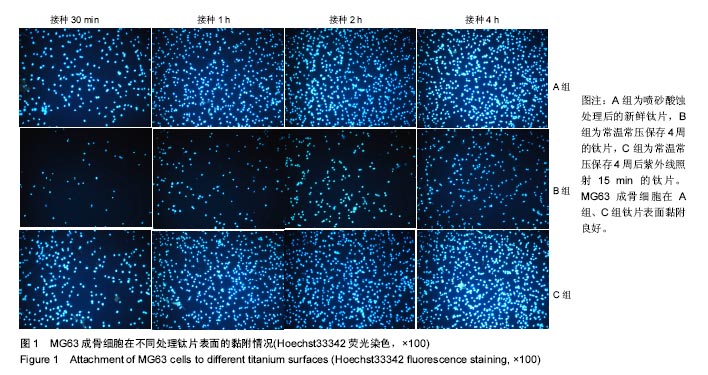
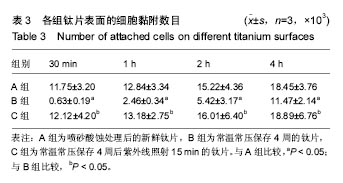
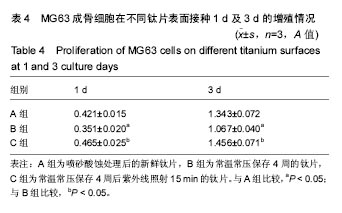
.jpg)